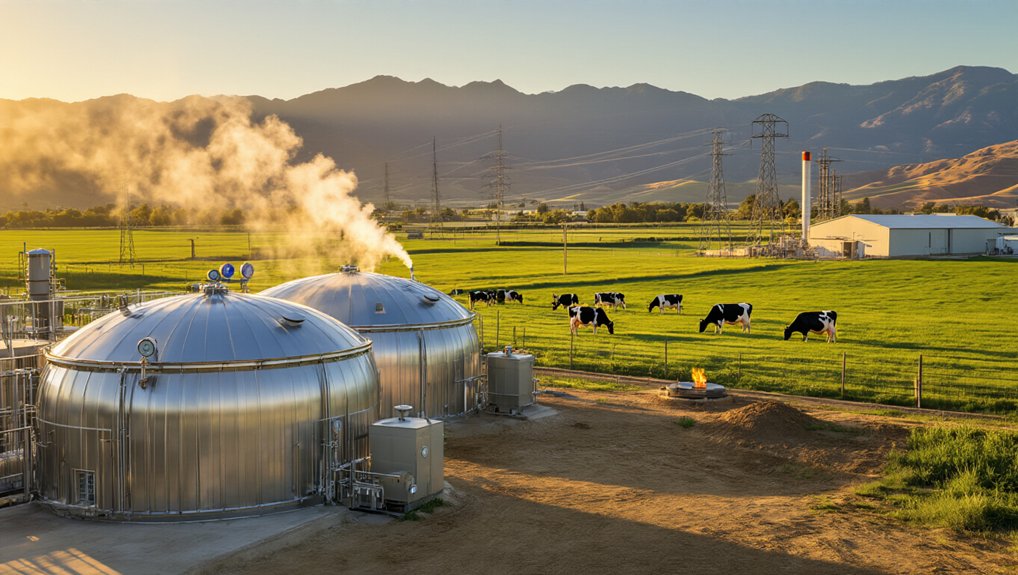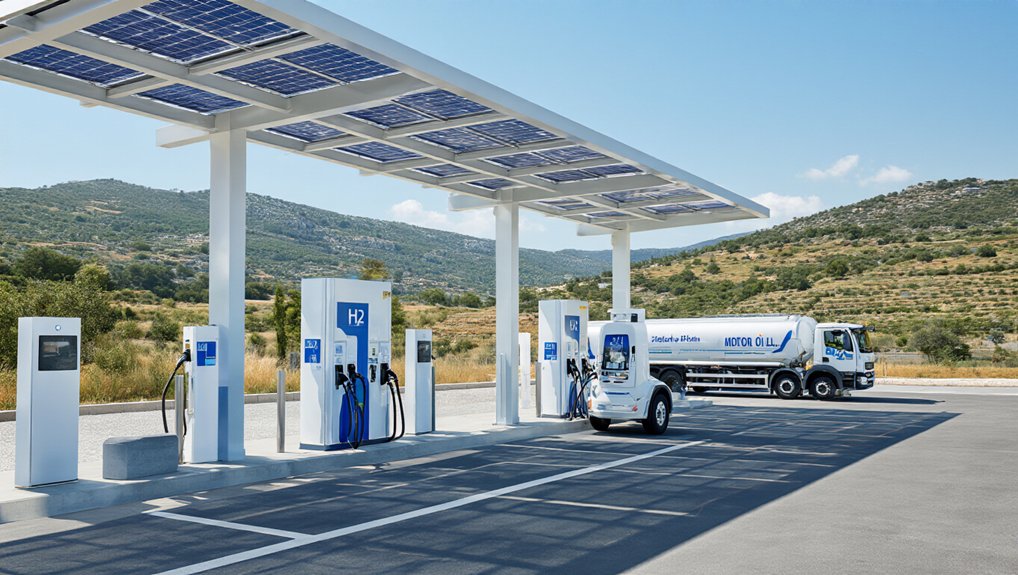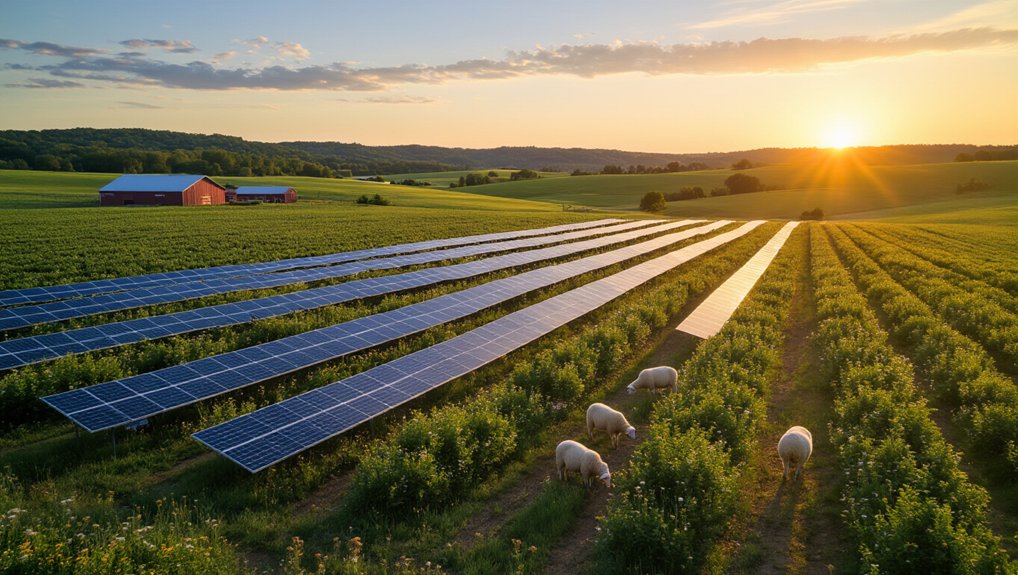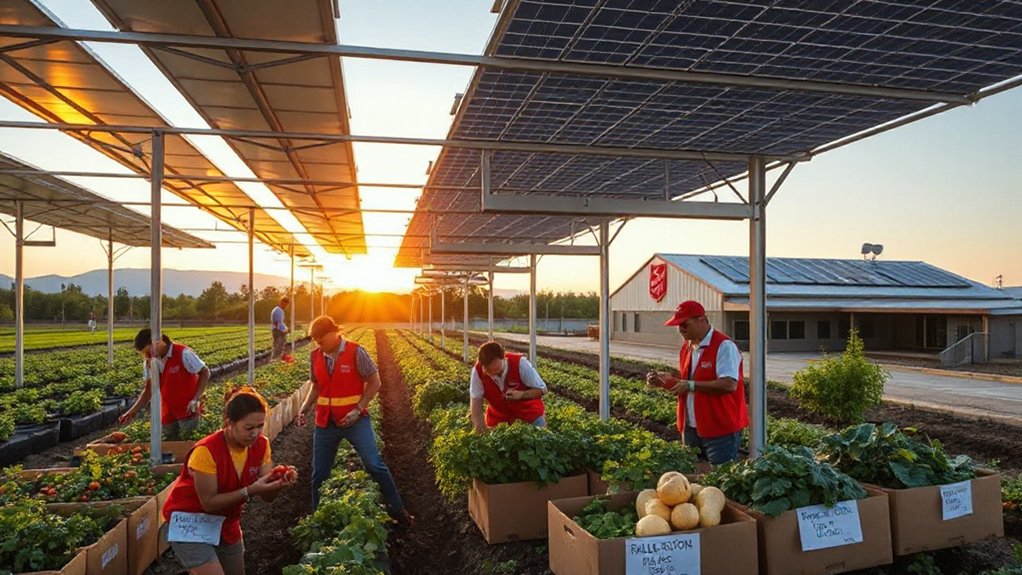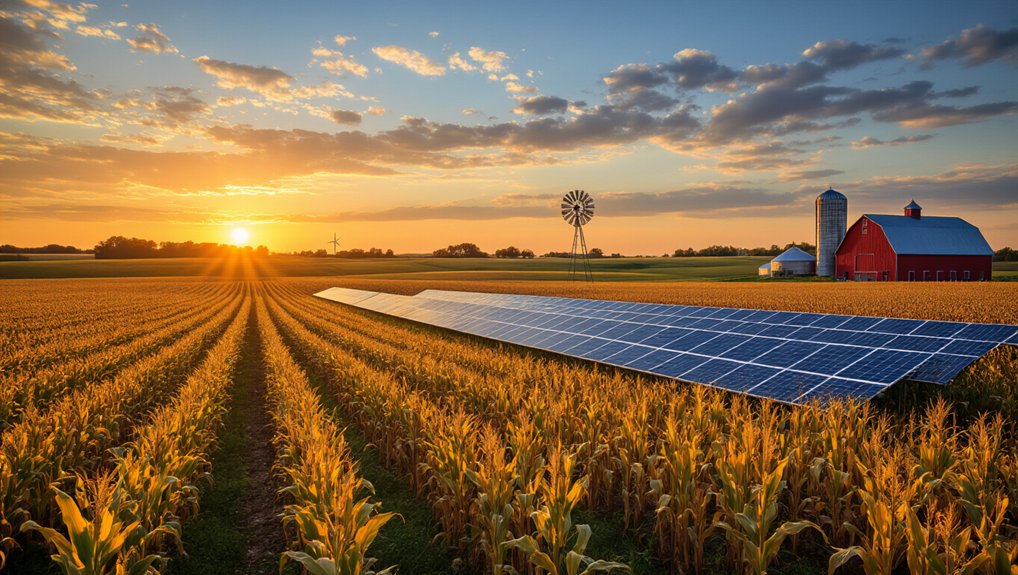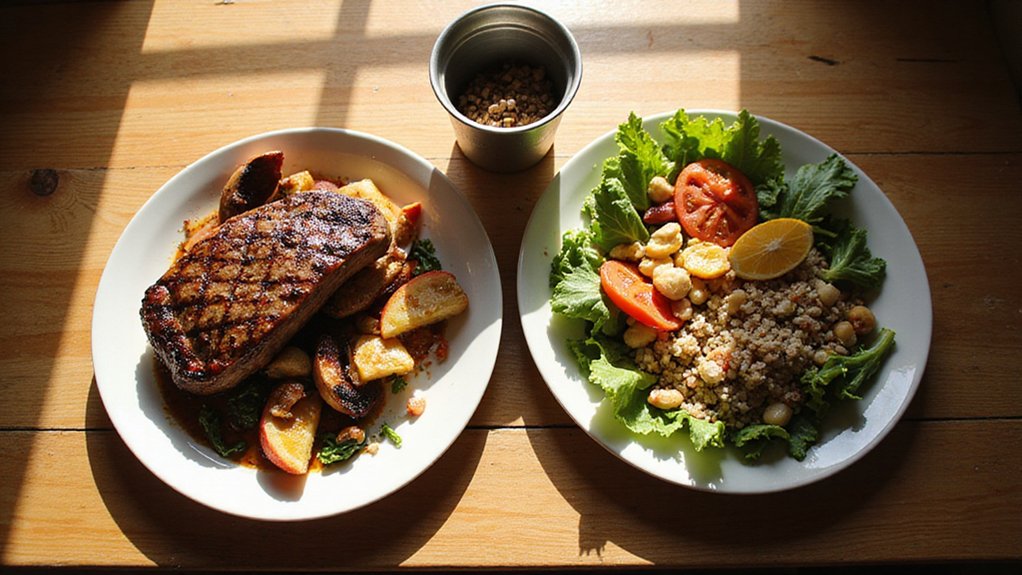While California’s tech titans obsess over the next app that’ll disrupt your breakfast routine, the state’s dairy farmers are quietly engineering a different kind of disruption—one that involves 1.7 million cows and their prodigious waste output.
Each dairy cow produces about 100 gallons of manure daily. That’s right, 100 gallons. Per cow. Every single day. Do the math on 1.7 million cows and you’ve got yourself a methane factory that would make any oil executive jealous. Except instead of drilling for natural gas, these farmers are harvesting it from cow crap.
The state’s dairy and livestock sector pumps out 18.7 to 22 million metric tons of CO2 equivalent annually—roughly 6% of California’s total greenhouse gas emissions. That’s a lot of planetary warming coming from Bessie and friends. So California did what California does: legislated the problem away. Sort of. They mandated a 40% reduction in manure methane emissions by 2030.
Enter the anaerobic digesters—basically giant stomachs that eat cow manure and burp out renewable natural gas. These mechanical marvels capture methane that would otherwise float into the atmosphere, where it’s 25 times more potent than CO2 at trapping heat. The captured gas gets cleaned up and pumped into power grids or used as vehicle fuel. The carbon intensity of this dairy biogas averages -269 grams of CO2 emissions per megajoule of energy, meaning it actually removes greenhouse gases from the atmosphere. California now has 120 digesters operating on dairy farms, with another 99 under development, primarily in the Central Valley.
Money talks, and California’s talking loud. The state’s Cap-and-Trade program and Low Carbon Fuel Standard create real cash incentives for farmers to install these systems. Grants lower the financial risk. Carbon credits generate revenue. Energy sales offset costs. It’s capitalism meets environmentalism, and surprisingly, they’re getting along.
But here’s the rub: these digesters work best on massive dairy operations. Small farms get stuck with higher per-unit costs, making adoption harder. Infrastructure requirements aren’t cheap either.
Still, the benefits stack up. Beyond cutting methane emissions, these projects create construction and maintenance jobs, reduce water contamination risks, and help dairies avoid becoming environmental pariahs in their communities. Unlike traditional energy systems, these biogas operations deliver consistent electricity regardless of weather conditions, providing reliable power to local grids.
Satellite monitoring now tracks progress, keeping everyone honest.
California’s dairy farmers are proving that sometimes the best solutions come from the ground up. Or in this case, from what hits the ground.
References
- https://energyathaas.wordpress.com/2024/01/22/cow-poop-is-now-a-big-part-of-california-fuel-policy/
- https://calmatters.org/environment/2023/10/climate-change-cows-credits/
- https://ww2.arb.ca.gov/sites/default/files/2022-03/final-dairy-livestock-SB1383-analysis.pdf
- https://www.earthdata.nasa.gov/news/feature-articles/from-cow-manure-landfills-mapping-methane-california
- https://sso.cobank.com/documents/7714906/7715329/Interest-in-California-Dairy-Manure-Methane-Digesters-Follows-the-Money-Aug2020.pdf/be11d7d6-80df-7a7e-0cbd-9f4ebe730b25?t=1603745079998
